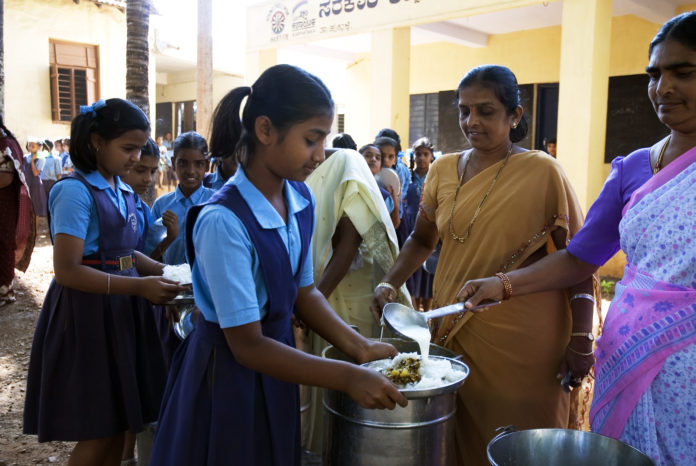
The survey which assessed nutrition status of 12286 mothers and 14616 babies shows slightly reduced malnutrition incidence than latest NFHS data
One in four children in ten of India’s most populated cities are malnourished.
The Urban HUNGaMA (Hunger and Malnutrition ) survey report was released on Wednesday found the prevalence of stunting(low height for age) is 22.3% among children aged less than 5 years. 21.4 percent of these children were underweight and 13.8 perfect were wasted (low weight for height). Among newborns 15.7 percent have birth weight less than 2.5 kg.
The largest number of underweight children were in Hyderabad (25.8%) while Chennai had the least proportion at 13.5%. Prevalence of stunting ranged from 14.8% in Chennai to 30.6% in Delhi, while 13.9% of children were found to be wasted with lowest proportion in Jaipur (10.8%) and highest in Mumbai (19%). The proportion of children born with low birth weight ranged from 13.5% in Hyderabad to 25.1% in Kolkata.
The figures are slightly less than the malnutrition figures in the National Family Health Survey 4. According to NFHS-4, children under 5 years who are stunted (height-for-age) was 31% in urban areas versus 41.2% in rural areas, while children under 5 years who are wasted (weight-for-height) was similar in urban (20%) vs rural areas (21.5%). Children under 5 years who are underweight (weight-for-age) was 29.1% in urban areas when compared to 38.3% in rural areas.
The HUNGaMA survey covered ten cities – Mumbai, Delhi, Bengaluru, Hyderabad, Ahmedabad, Chennai, Kolkata, Surat, Pune and Jaipur. The study was carried out by the NGO Naandi foundation in association with The Citizens Alliance which is lead by young parliamentarians across political parties. A total of 12286 mothers were interviewed and 14616 children aged 0-59 months were measured for height and weight which revealed underweight, stunting and wasting data for children under 5 years of age.
The largest number of underweight children were in Hyderabad (25.8%) while Chennai had the least proportion at 13.5%. Prevalence of stunting ranged from 14.8% in Chennai to 30.6% in Delhi, while 13.9% of children were found to be wasted with lowest proportion in Jaipur (10.8%) and highest in Mumbai (19%). The proportion of children born with low birth weight ranged from 13.5% in Hyderabad to 25.1% in Kolkata.
While disease burden due to Child and maternal malnutrition has dropped in India substantially since 1990, this is still the leading risk factor for health loss in 2016 causing 14.6% of the country’s total DALYs (Disability adjusted life years – it is the sum of years of life lost and years lived with disability) according to the recently released first State level disease burden study. When compared to China, child and maternal malnutrition was 12 times higher per person in India in 2016 and was highest in major EAG states ( the eight socioeconomically backward states of Bihar, Chhattisgarh, Jharkhand, Madhya Pradesh, Orissa, Rajasthan, Uttaranchal and Uttar Pradesh, referred to as the Empowered Action Group states), Assam and North -East states and is higher in females than in males. Kerala had the lowest disease burden due to this risk among the Indian states, but even this was 2.7 times higher per person than in China.
Mother’s education level and economic status of family were found in the HUNGaMA survey to be directly correlated to stunting and wasting in these children. When compared to the NFHS-4 figures, this study shows that cities are performing slightly better when compared to the other urban parts of India when it comes to under 5 children malnutrition, however the total survey population is less in this study.
The National Family Health Survey 2015-16 (NFHS-4), the fourth in the NFHS series, provided information on population, health and nutrition for India and each State / Union territory. NFHS-4, for the first time, provided district-level estimates for many important indicators. NFHS-4 fieldwork for India was conducted from 20 January 2015 to 4 December 2016 by 14 Field Agencies and gathered information from 601,509 households, 699,686 women, and 103,525 men.













